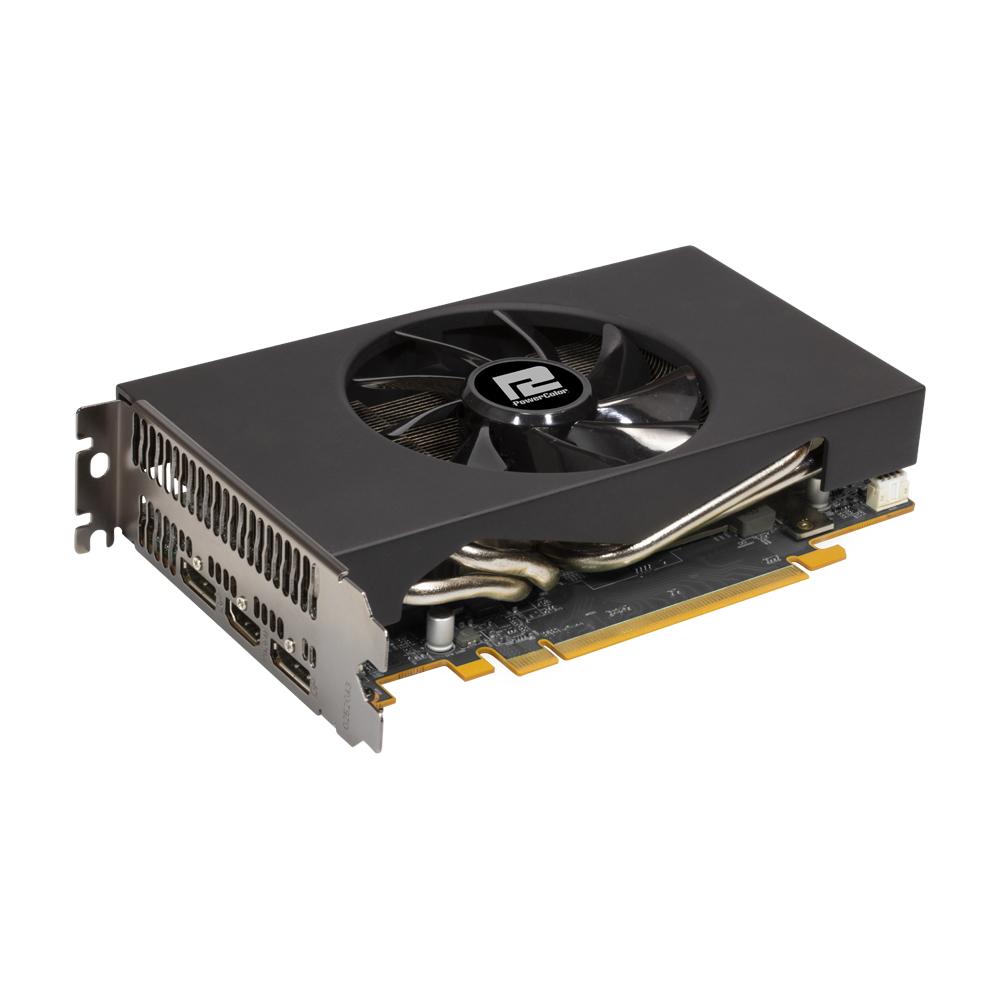PowerColor Launches Radeon RX 5700 In Mini-ITX Form Factor

According to a report by Japanese publication Hermitage Akihabara, PowerColor has launched the Radeon RX 5700 ITX. Lamentably, the graphics card is exclusive to the Japanese market.
The PowerColor Radeon RX 5700 ITX, identified with the AXRX 5700 ITX 8GBD6-2DH part number, features a dual-slot design and measures 175 x 110 x 40mm. The graphics card is equipped with a matte black cooler and a single cooling fan. As per the description, there's an aluminum heatsink with four 6mm heatpipes under the graphics card's shroud.

Due to its compact size, the Radeon RX 5700 ITX adheres to AMD's reference Radeon RX 5700 specifications. The 2,304 Stream Processors (SPs) check in with a 1,465 MHz base clock, 1,625 MHz game clock and 1,725 MHz boost clock. The 8GB of GDDR6 memory remains at 1,750 MHz (14,000 MHz effective) across a 256-bit memory bus to deliver a memory bandwidth up to 448 GB/s.
What's fascinating is that the Radeon RX 5700 ITX relies on a single 8-pin PCIe power connector despite running at the same clocks as a vanilla Radeon RX 5700, which utilizes a combination of a 6-pin and 8-pin PCIe power connectors. Nonetheless, PowerColor recommends a 600W power supply as a minimum for the little graphics card. Display outputs include one HDMI 2.0 port and two DisplayPort 1.4 outputs.
The Radeon RX 5700 ITX will go on sale tomorrow at Aiuto for 44,364 yen, which translates to roughly $406. We've reached out to PowerColor to see if the Radeon RX 5700 IT will make it to this side of the world.
Get Tom's Hardware's best news and in-depth reviews, straight to your inbox.

Zhiye Liu is a news editor, memory reviewer, and SSD tester at Tom’s Hardware. Although he loves everything that’s hardware, he has a soft spot for CPUs, GPUs, and RAM.